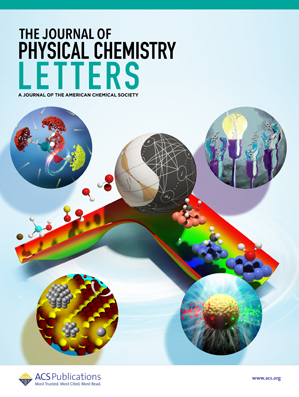高效四端钙钛矿-有机串联太阳能电池中宽带隙钙钛矿膜的双界面钝化
IF 4.6
2区 化学
Q2 CHEMISTRY, PHYSICAL
引用次数: 0
摘要
钙钛矿太阳能电池(PSCs)中的界面缺陷通过促进非辐射重组、阻碍电荷传输和促进离子迁移而显著降低器件效率。本文采用2-(N-morpholino)乙磺酸钾(MESK)和碘化辛胺(OAI)的双界面钝化策略,针对电子传输层(ETL)/钙钛矿和钙钛矿/空穴传输层(HTL)界面,提高了带隙为1.77 eV的FA0.8Cs0.2Pb(I0.6Br0.4)3基宽带隙PSCs的效率。MESK中的磺酸基通过与Pb离子配合钝化底部界面缺陷,OAI中的胺基通过与Pb和卤化物离子相互作用有效钝化顶部界面缺陷。双界面钝化策略提高了钙钛矿结晶度,增大了晶粒尺寸,减少了非辐射复合。结果表明,PSCs的性能得到了显著提高,在四端(4T)钙钛矿-有机串联太阳能电池(TSC)中实现了23.69%的功率转换效率(PCE),为TSC的商业化提供了一个有前景的可持续解决方案。本文章由计算机程序翻译,如有差异,请以英文原文为准。

Dual-Interface Passivation of Wide-Bandgap Perovskite Films for Efficient Four-Terminal Perovskite–Organic Tandem Solar Cells
Interface defects in perovskite solar cells (PSCs) can significantly impair device efficiency by promoting nonradiative recombination, hindering charge transport, and facilitating ion migration. In this work, we introduce a dual-interface passivation strategy utilizing 2-(N-morpholino)ethanesulfonic acid potassium (MESK) and octylammonium iodide (OAI), targeting both the electron transport layer (ETL)/perovskite and perovskite/hole transport layer (HTL) interfaces to enhance the efficiency of wide-bandgap PSCs based on FA0.8Cs0.2Pb(I0.6Br0.4)3 with a bandgap of 1.77 eV. The sulfonic group in MESK passivates bottom interface defects through coordination with Pb ions, while the amine group in OAI interacts with Pb and halide ions to effectively passivate top interface defects. The dual-interface passivation strategy improves perovskite crystallinity, enlarges grain size, and reduces nonradiative recombination. As a result, the performance of PSCs is significantly enhanced, achieving a power conversion efficiency (PCE) of 23.69% in a four-terminal (4T) perovskite–organic tandem solar cell (TSC), which provides a promising and sustainable solution for the commercialization of TSCs.
求助全文
通过发布文献求助,成功后即可免费获取论文全文。
去求助
来源期刊

The Journal of Physical Chemistry Letters
CHEMISTRY, PHYSICAL-NANOSCIENCE & NANOTECHNOLOGY
CiteScore
9.60
自引率
7.00%
发文量
1519
审稿时长
1.6 months
期刊介绍:
The Journal of Physical Chemistry (JPC) Letters is devoted to reporting new and original experimental and theoretical basic research of interest to physical chemists, biophysical chemists, chemical physicists, physicists, material scientists, and engineers. An important criterion for acceptance is that the paper reports a significant scientific advance and/or physical insight such that rapid publication is essential. Two issues of JPC Letters are published each month.
 求助内容:
求助内容: 应助结果提醒方式:
应助结果提醒方式:


